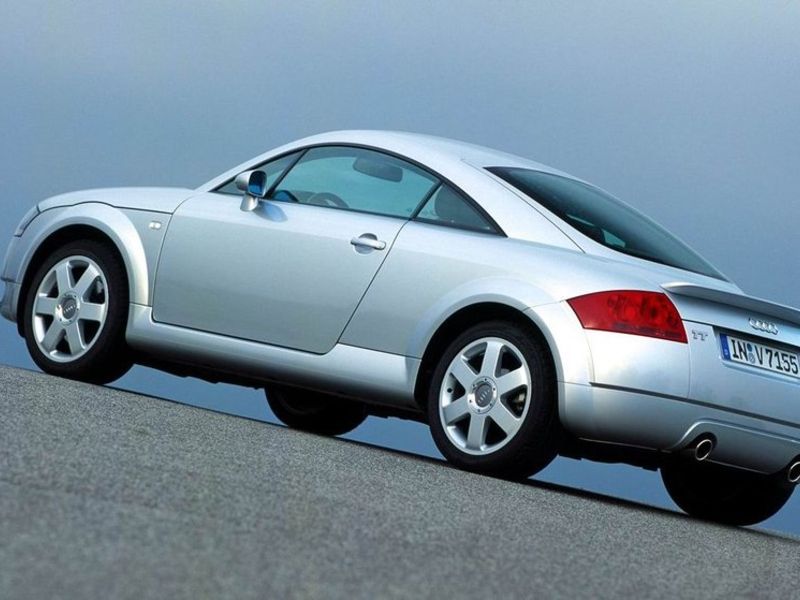
The Audi TT debuts as a concept at the Frankfurt auto show on Sept. 14, 1995.
The coupe featured a simplified nose, tail and roofline, with nearly horizontal speed lines streaking back from the headlights to the wraparound taillights.
Audi described the interior in simple terms: “as much as necessary and as little as possible.”
In 1994, Audi designers Freeman Thomas and J Mays began sketching a coupe with Bauhaus-inspired cues. It recalled the rounded shapes of prewar race cars and postwar sedans.
Audi Chairman Herbert Demel described the 1995 concept as “an enthusiast’s car with great charisma.”
The Wall Street Journal once called the car “high geometric cool.”
It was powered by a 1.8-liter, four-cylinder engine borrowed from the A4, a manual transmission and Quattro all-wheel drive. While the press and show visitors heaped praise on the TT, Demel insisted it was a design study, not a preview of a production model.
At the 1995 Tokyo auto show, Audi introduced another concept, named TTS. It expanded the TT family to include a convertible and powerful roadster with a turbo-four tuned to deliver 225 hp at 5,900 rpm.
The first-generation production TT made its debut at the 1998 Paris auto show. It featured aluminum elements in the interior, progressive wheel design, a short, spherical gear knob and round, closely spaced tailpipes. For the first time, Audi employed a dual-clutch transmission in a production model — known as S Tronic.
The roaster went on sale in the U.S. for the 2000 model year, and the convertible followed for 2001. Both TT variants were equipped with a turbocharged, 1.8-liter four-cylinder engine with 180 hp. Audi later offered a 225-hp engine and Quattro.
Audi announced plans in 2019 to drop the TT to focus on electrification and as the market continued to shift away from cars to light trucks.